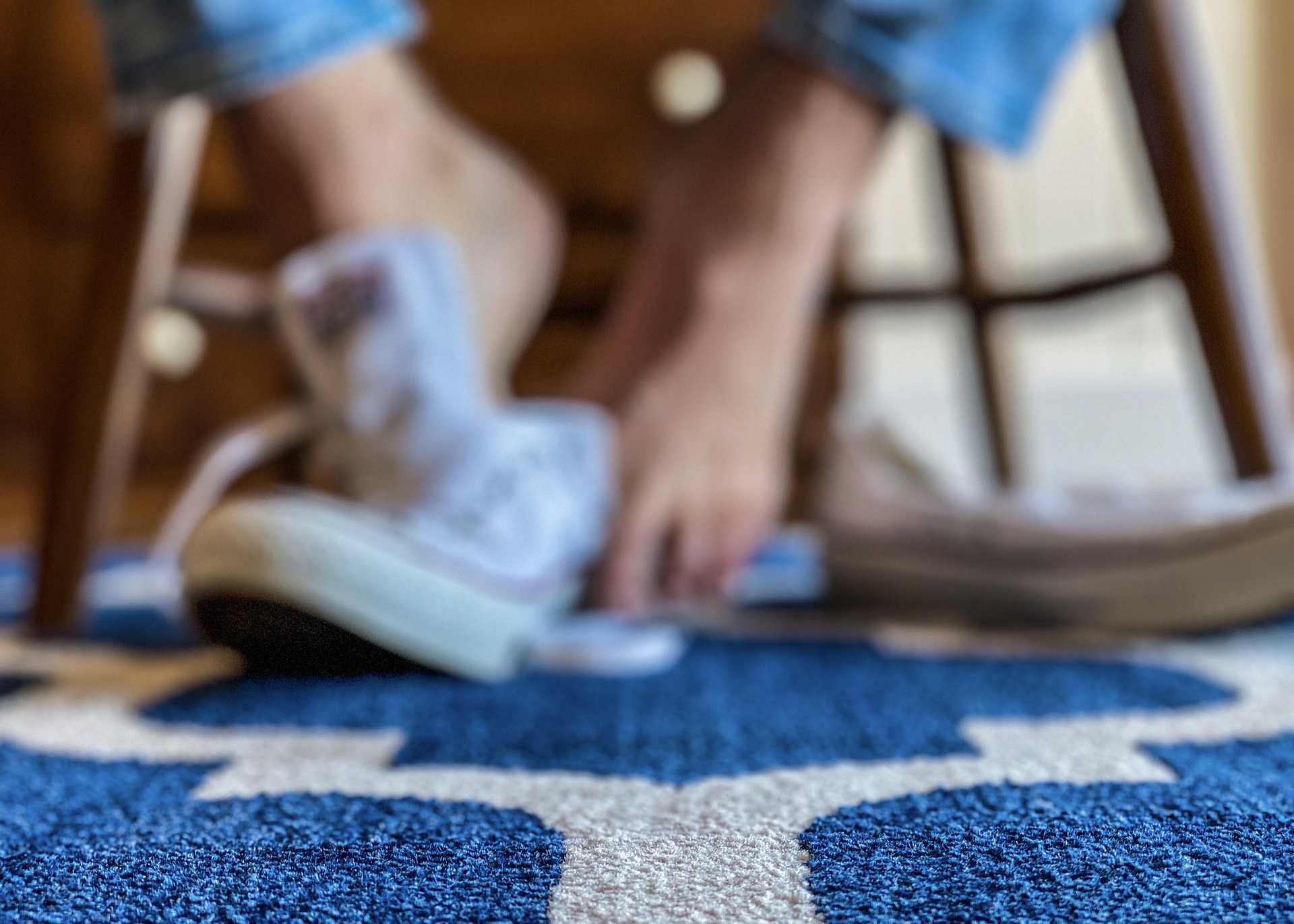Swollen feet, a condition medically referred to as edema, are a frequent health issue affecting countless individuals daily. This condition manifests as an abnormal accumulation of fluid in the feet and ankles, leading to discomfort and a significant reduction in mobility and quality of life. Understanding the underlying causes of swollen feet is essential as it helps in identifying the most effective remedies and preventive measures to manage the condition.
What Are Swollen Feet?

The swelling can result from various factors. At its core, it happens when small blood vessels in the feet leak fluid into surrounding tissues. The leakage can be prompted by an array of triggers, including prolonged standing or sitting, which impairs normal circulation and fluid dynamics.
Additionally, health issues such as heart failure, kidney disease, and chronic venous insufficiency can lead to compromised fluid regulation, exacerbating the tendency for swelling. Environmental factors and lifestyle choices, such as diet high in salt, can also influence fluid retention, contributing to the development of swollen feet.
Understanding the specific cause of swelling is crucial in determining the most appropriate treatment or intervention to alleviate the discomfort and prevent future occurrences.
Common Causes of Swollen Feet
Swollen feet can arise from various conditions and lifestyle factors. Identifying the root cause is essential for effective treatment and management. Below are some of the most common triggers for this uncomfortable condition.
Standing or Sitting for Long Periods
Prolonged periods of standing or sitting inhibit the normal circulation of blood and fluids within the body, particularly in the lower extremities. This stagnation can cause fluid to pool in the feet and ankles, leading to swelling. It is a frequent issue for individuals in professions that require extended periods of immobility, such as office workers or sales clerks.
Excessive Salt Intake
Consuming a diet high in salt can lead to fluid retention, exacerbating swelling in the feet. Salt causes the body to hold extra water to maintain the sodium balance outside of the cells, which is why reducing salt intake can be an effective remedy for reducing edema.
Pregnancy
During pregnancy, the body undergoes numerous physiological changes, including increased fluid retention and changes in blood chemistry, which can lead to swollen feet. Additionally, the growing uterus can put pressure on veins in the pelvis, slowing down the return of blood from the legs to the heart and causing fluids to pool in the feet and ankles.
Medical Conditions
Several medical conditions can contribute to swollen feet, including kidney disease, heart failure, and liver disease. These conditions can impair the body’s ability to manage fluids and circulation, leading to edema. Chronic venous insufficiency, where the veins do not efficiently send blood back to the heart, can also cause swelling.
Medications that May Cause Swelling
Certain medications can contribute to swollen feet as a side effect. These include drugs such as steroids, estrogen (found in some birth control pills and hormone replacement therapy), certain antidepressants, and medications used to treat high blood pressure like calcium channel blockers. If swelling appears after starting new medications, consulting with a healthcare provider is crucial to adjust the treatment plan if necessary.
How to Recognize Swollen Feet
Recognizing the signs and symptoms of swollen feet is crucial for timely intervention and treatment. Swollen feet can range from mild to severe and may be accompanied by other symptoms depending on the underlying cause.
Symptoms of Swollen Feet

- Stretched or shiny skin over the affected areas.
- Skin that retains a dimple after being pressed for several seconds, known as pitting edema.
- Discomfort or pain in the swollen feet, which can range from a dull ache to intense pain.
- Changes in the color of the skin, such as reddening or blueness.
- Feeling of warmth or heat in the swollen areas, which could indicate inflammation or infection.
When to Seek Medical Advice
While occasional, mild swelling can be normal, especially after prolonged standing or during pregnancy, there are times when consulting a healthcare provider is essential:
- Persistent Swelling: If the swelling does not improve after resting or elevating the feet for a few hours, or if it continues to recur.
- Severe and Sudden Swelling: If swelling appears suddenly and severely, it could indicate a serious underlying condition, such as a blood clot (deep vein thrombosis).
- Pain and Redness: If the swelling is accompanied by pain, redness, or warmth, which could suggest an infection or inflammation.
- Other Symptoms: If swollen feet are accompanied by symptoms like shortness of breath, chest pain, or confusion, immediate medical attention is necessary as these could be signs of heart failure or other critical conditions.
Home Remedies for Swollen Feet
Managing swollen feet effectively often includes simple home remedies that can alleviate symptoms and prevent future occurrences.
Elevating the Feet
One of the simplest yet most effective remedies for swollen feet is elevating them above the level of the heart. This position helps improve circulation and allows gravity to aid in draining excess fluid build-up. Try to elevate your feet for 20 to 30 minutes several times a day, especially after prolonged periods of standing or sitting.
Exercise and Stretching
Regular physical activity and stretching can significantly improve circulation and help manage swelling. Gentle exercises like walking or swimming stimulate blood flow, while yoga and stretching exercises can be particularly effective in promoting fluid movement away from the feet. Focus on movements that stretch and flex the ankles and feet.
Hydration and Dietary Adjustments
Although it may seem counterintuitive, increasing water intake can help reduce swelling. Hydration helps flush sodium and other waste products from the body, decreasing fluid retention. Additionally, reducing salt intake is crucial as excess sodium can exacerbate swelling by encouraging the body to retain water. Incorporate diuretic foods that promote urine production and reduce swelling, such as cucumber, celery, and asparagus.
Compression Wear and Support

Implementing these home remedies can provide significant relief from swollen feet and help maintain foot health. However, it’s important to monitor the effectiveness of these methods and consult with healthcare professionals if symptoms persist or worsen.
Custom Solutions for Swollen Feet
Custom orthotics and compression wear play a significant part in managing swollen feet, offering relief and support that can mitigate symptoms and improve daily comfort. Here’s how these solutions can be instrumental in addressing foot swelling.
How Custom Orthotics Can Help
Custom orthotics are specially designed to fit the contours of an individual’s feet, providing targeted support that can alleviate pressure and improve foot function. For those suffering from swollen feet, orthotics help by:
- Enhancing foot stability and distributing weight more evenly, which can prevent excessive strain on any one part of the foot.
- Improving the alignment of the feet and ankles, which can enhance blood circulation and help prevent fluid build-up.
- Offering additional arch support, which can be particularly beneficial for those whose swollen feet are caused or exacerbated by structural foot issues.
How Compression Can Help
Compression wear, such as socks or stockings, is designed to apply gentle pressure to the legs and feet. This pressure supports the veins in pushing blood back up toward the heart, reducing the accumulation of fluid that can lead to swelling. Key benefits include:
- Improved venous return, which helps decrease the diameter of major veins by increasing the velocity and volume of blood flow.
- Reduced fluid retention in the feet and ankles.
- Prevention of worsening of existing swelling, especially during long periods of sitting or standing.
When to Consider Professional Help
While many cases of swollen feet can be managed with home remedies and over-the-counter solutions, there are certain situations where it is crucial to seek professional medical advice. Recognizing these signs can ensure timely and effective treatment, preventing further health complications.
It is important to consult a healthcare provider if you experience any of the following symptoms along with swollen feet:
- Persistent or worsening swelling: If the swelling does not improve after trying home remedies or if it gets worse over time.
- Painful swelling: If the swelling is accompanied by pain or tenderness, which could indicate an underlying injury or infection.
- Sudden onset of swelling: If one or both feet swell suddenly, this could be a sign of a serious condition, such as a blood clot or heart failure.
- Associated symptoms: If swollen feet are accompanied by other symptoms such as fatigue, shortness of breath, or weight gain, which might suggest a systemic issue like heart disease or kidney failure.
- Changes in skin colour or temperature: If the skin over the swollen area becomes red, warm, or changes colour, this could indicate an infection or circulation problem.
Care-Med’s Solutions for Orthotics and Compression Wear
At Care-Med LTD, we specialize in providing high-quality, customized solutions for those dealing with swollen feet. Our custom-made orthotics are crafted after a detailed assessment of each individual’s foot structure and specific needs, ensuring the perfect fit and maximum effectiveness. Additionally, we offer a range of compression wear options, from over-the-counter socks to prescription-strength stockings, all designed to meet our clients’ diverse needs.
Support for Swollen Feet
Ignoring swollen feet can lead to further complications, reducing quality of life and restricting daily activities. By understanding the causes and adopting effective remedies, you can manage symptoms and prevent the recurrence of swelling. However, it is essential to recognize when professional help is needed to address underlying health issues effectively.
Share This Story, Choose Your Platform!
Table of Contents
We specialize in orthotics, body braces, and compression wear tailored to your unique needs in Toronto. Reach out to us at info@caremed.care or call 416-782-5353 to book your fitting and consultation.
Experience the difference of customized solutions designed just for you.











